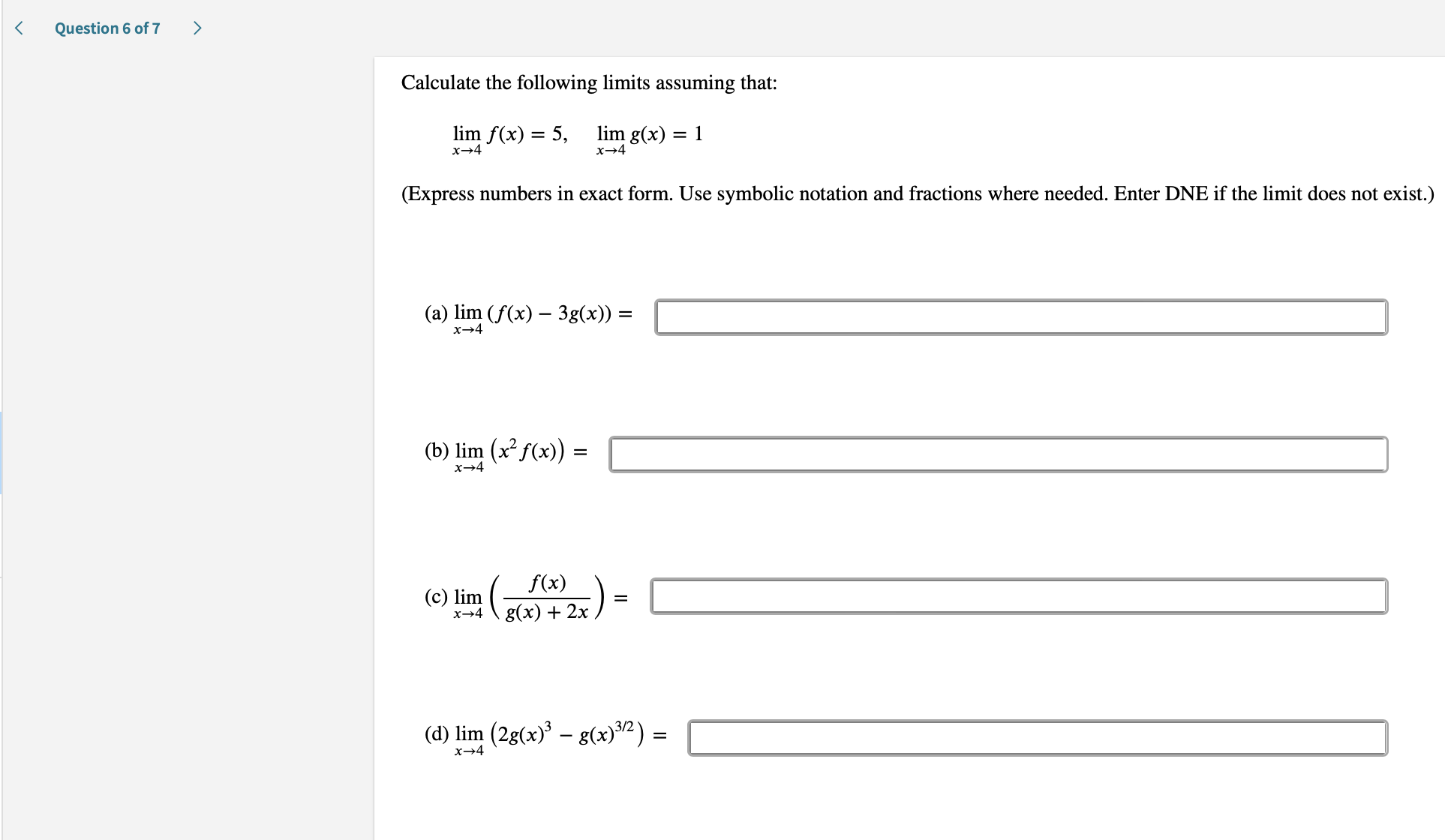Answered step by step
Verified Expert Solution
Question
1 Approved Answer
Q1 (2 points) cos(x) + k Suppose that lim = 0. What is the value of k, if it exists? Explain your answer. x-0










Q1 (2 points) cos(x) + k Suppose that lim = 0. What is the value of k, if it exists? Explain your answer. x-0 x Q2 (2 points) Let f be a continuous, twice differentiable function such that lim f(x) = 0 and lim f'(x) = 1. Calculate lim xf(x) x0 x0 x-0 Q3 (3 points) Let f(x) = 3/ 3 x- 8. a) Find and classify all critical points of f. b) Find all points of inflection of f. Fully justify your answer. < Question 1 of 7 > Find two positive real numbers such that the sum of the first number and the second number is 46 and their product is a maximum. (Use symbolic notation and fractions where needed. Give your answer as a comma separated list of two values.) numbers: < Question 2 of 7 > A wire of length 14 m is divided into two pieces and each piece is bent into a square. How should this be done in order to minimize the sum of the areas of the two squares? (Give your answer in the form of a comma separated list of the lengths of the two pieces.) the lengths of the pieces: m < Question 3 of 7 > Solve sin (0) = cos (20) for -2 0 0. (Give your answer in the form of a comma-separated list. Express numbers in exact form. Use symbolic notation and fractions where needed.) 0 = Question 4 of 7 > Consider the logarithm. log 25 (15) + log25 Identify all of the values equivalent to the given logarithm. log25 (25) log25 1 5 (15. 3{}) 40 log25 50 log25 < Question 5 of 7 > Consider the graph of y = g(x). y 15 -5 -4 -3 -2 1 10+ 5+ 0 1 2 3 4 5 6 -5+ -10- -15+ -20 x Identify the correct statement(s) about the graph. lim g(x) = o x0 lim_ g(x) = -o x+3+' lim g(x) = x-37 lim g(x) = - x-2+ lim_g(x) = o x-27 < Question 6 of 7 > Calculate the following limits assuming that: lim f(x) = 5, lim g(x) = 1 x-4 x-4 (Express numbers in exact form. Use symbolic notation and fractions where needed. Enter DNE if the limit does not exist.) (a) lim (f(x) 3g(x)) = x-4 (b) lim (x f(x)) = x-4 = (c) lim x-4 f(x) g(x) + 2x = (d) lim (2g(x) - g(x)/2) x-4 = < Question 7 of 7 > Let f(x) = 3x-3 (3) 3 ln (x) when x < 1 when x > 1 Is f increasing? O No, because the f(x) value decreases as the x-value increases. No, because the f(x) value increases as the x-value increases. Yes, because the f(x) value increases as the x-value increases. Yes, because the f(x) value decreases as the x-value increases. Does have an inverse? If so, determine it in the following form. If not, enter DNE for both parts. f(x) = A when x < 1 { B when x > 1 A = B =
Step by Step Solution
There are 3 Steps involved in it
Step: 1

Get Instant Access to Expert-Tailored Solutions
See step-by-step solutions with expert insights and AI powered tools for academic success
Step: 2

Step: 3

Ace Your Homework with AI
Get the answers you need in no time with our AI-driven, step-by-step assistance
Get Started


